Transition Sentinel - Review
As strange as it may seem, up until now Transition didn't have a longer travel 29er in their fleet. Sure, there was the Smuggler, which punched well above what its 115mm of rear travel would suggest, but that was it in the full-squish 29er department. That's no longer the case, and the Sentinel has made its grand entrance as a super slack, extra-beefy machine designed for partying on the descents.
There are three complete bikes in the lineup, with prices ranging from $2,999 USD up to the X01 Complete model tested here that retails for $4,999 USD. Component highlights include a 160mm Fox Float 36 fork, a Float DPX2 shock, SRAM X01 Eagle 12-speed drivetrain and SRAM Code RSC brakes. There's also a frame only option (with a DPX2 shock) for $1,999.
There are three complete bikes in the lineup, with prices ranging from $2,999 USD up to the X01 Complete model tested here that retails for $4,999 USD. Component highlights include a 160mm Fox Float 36 fork, a Float DPX2 shock, SRAM X01 Eagle 12-speed drivetrain and SRAM Code RSC brakes. There's also a frame only option (with a DPX2 shock) for $1,999.
Transition Sentinel Details
• Intended use: all-mountain / enduro
• Travel: 140mm rear / 160mm front
• Wheel size: 29"
• Aluminum frame
• 64° head angle
• 435mm chainstays
• Boost spacing front and rear
• Sizes: S, M, L, XL
• Weight: 32 pounds (size L)
• Price: $4,999 USD
• www.transitionbikes.com
• Intended use: all-mountain / enduro
• Travel: 140mm rear / 160mm front
• Wheel size: 29"
• Aluminum frame
• 64° head angle
• 435mm chainstays
• Boost spacing front and rear
• Sizes: S, M, L, XL
• Weight: 32 pounds (size L)
• Price: $4,999 USD
• www.transitionbikes.com
Frame Details
The Sentinel's aluminum frame looks like it was built to take a beating, with a generous amount of overlap between the top- and downtube. There's plenty of standover clearance, and the seat tube height is nice and low, allowing for the use of longer dropper posts.
The bike is fully up to date with the latest standards - there's Boost spacing front and rear, and a trunnion-mounted, metric shock that delivers 140mm of travel, but thankfully Transition stuck with the tried-and-true threaded bottom bracket.
Internal routing is in place for everything except the rear brake line, which seems like the ideal compromise between fashion and function. Transition updated their internal routing design with a new plastic cover where the housing enters the frame, and there's also a length of foam tubing that goes around the housing to keep everything rattle-free. Even with a piggyback shock there's plenty of room to mount a water bottle cage in the front triangle, and there are ISCG tabs for riders who want to run a chain guide of some sort.
Suspension
The Sentinel uses Transition's GiddyUp suspension layout, their take on a Horst Link design. The overall configuration isn't drastically different from prior models in their lineup, although the kinematics have been revised slightly, resulting in a slightly longer rocker link, and a more vertically oriented shock.
Boundary Pushing Geometry
It's the Sentinel's geometry that's been lighting up the internet lately, and for good reason. There aren't many 29ers on the market with geometry as aggressive as this – a 64-degree head angle, 475mm reach for a size large, and a reduced offset fork. Those numbers are all parts of Transition's Speed Balanced Geometry concept, which we covered in detail here.
There are five main components that differentiate Transition's new Speed Balanced Geometry from what they have used in the past, concepts that have also been applied to the Patrol, Scout, and Smuggler for 2018. The bikes have an even longer reach, a slacker head angle, a reduced fork offset, a steeper seat tube angle, and shorter stems. Even though on paper the longer reach numbers may seem daunting (a size large will now be 475mm), the new bikes are spec'd with 10mm shorter stems, and the steeper seat angle will also help to maintain a similar bar to saddle distance to Transition's previous models. The reduced offset fork will also partially counteract the wheelbase length increase that comes with a slacker head angle.
It's the Sentinel's geometry that's been lighting up the internet lately, and for good reason. There aren't many 29ers on the market with geometry as aggressive as this – a 64-degree head angle, 475mm reach for a size large, and a reduced offset fork. Those numbers are all parts of Transition's Speed Balanced Geometry concept, which we covered in detail here.
There are five main components that differentiate Transition's new Speed Balanced Geometry from what they have used in the past, concepts that have also been applied to the Patrol, Scout, and Smuggler for 2018. The bikes have an even longer reach, a slacker head angle, a reduced fork offset, a steeper seat tube angle, and shorter stems. Even though on paper the longer reach numbers may seem daunting (a size large will now be 475mm), the new bikes are spec'd with 10mm shorter stems, and the steeper seat angle will also help to maintain a similar bar to saddle distance to Transition's previous models. The reduced offset fork will also partially counteract the wheelbase length increase that comes with a slacker head angle.
Specifications
| Specifications | ||
| Price | $4999 | |
| Travel | 140mm | |
| Rear Shock | Fox DPX2 Performance Elite | |
| Fork | Fox 36 Float RC2 160mm | |
| Cassette | SRAM XG 1275 | |
| Crankarms | SRAM Descendent Carbon | |
| Rear Derailleur | SRAM X01 Eagle | |
| Chain | SRAM GX Eagle | |
| Shifter Pods | SRAM X01 Eagle | |
| Handlebar | Race Face Turbine R (800 x 20mm) | |
| Stem | Race Face Turbine R (40mm) | |
| Grips | ODI Elite Flow | |
| Brakes | SRAM Code RSC | |
| Wheelset | e*thirteen TRS+ | |
| Tires | Maxxis Minion DHF & DHR II 29x2.3, EXO casing | |
| Seat | ANVL Forge Stealth | |
| Seatpost | RockShox Reverb Stealth | |
Climbing
Much of my riding over the last year has taken place on longer travel 29ers, so I'm familiar with what it typically takes to get them to the top of tricky climbs, but the Sentinel really is a different beast. Once it's in motion, its slack head angle and long wheelbase create a rock crawling monster, an immensely stable bike that'll scale pretty much anything, especially if the trail isn't too twisty and turny.
The way the Sentinel managed to find traction and remain calm even on the chunkiest trails was impressive, and while its handling feels quite different compared to a steeper angled, less sprawling bike, the Sentinel's geometry, including the reduced offset fork, makes it much more manageable than a cursory glance at its numbers would suggest. With the DPX2 set to 30% sag the bike has a very neutral feel - its acceleration isn't as snappy as the Hightower LT, but it still remains relativity bob free, although I usually ran the shock in the middle compression setting to get a little more support on the climbs.
The bike's steep, 76-degree seat angle makes it possible to keep plenty of weight over the front wheel, and no matter what mess of roots or rocks I aimed the bike at it would roll up, over, and onward without stalling out. Of course, there's no escaping the fact that the Sentinel is a little portly, and those extra couple of pounds are noticeable – it doesn't exactly leap off the starting line when you step on the pedals.
With the reduced offset fork it felt like there was less need to make micro-corrections to the front end, and I found that I didn't really need to pay as much attention to the bike to keep it on track, even on tighter uphill switchbacks. Compared to a bike like the Yeti SB5.5, where the front end tended to feel a little light on really steep climbs, the Sentinel remained glued to the ground, without any unwanted wandering or flopping.
Descending
The Sentinel is an absolute beast when it comes time to descend, a downright monster when the trail turns steep and rough. There are plenty of long-travel 29ers out there that can handle the Whistler Bike Park, but when it comes to tackling the steepest, chunkiest trails there aren't many that can match the Sentinel's performance. The amount of stability is astounding, and the weight that held it back a bit on the climbs only serves to make it feel even more solid, especially when touching back down after spending time airborne.
The Sentinel does prefer to plow straight ahead rather than pop off trailside features – smashing straight down the trail is its strong suit. The slack head angle and reduced offset fork make the bike feel like it's on rails in the turns, a sensation that took a little getting used to. It's almost like carving down a slope on skis that haven’t been detuned all the way – initiating turns is easy, but finishing them is a little harder, because the skis (or bike) want to keep maintaining that same arc. It takes a little extra muscle to make quick direction changes, and you really need to lean into the whole bike, rather than steering from the handlebar.
The slightly different riding style quickly became second nature, but it does feel kind of strange going from the Sentinel to a bike with more traditional geometry, at least for the first few minutes – those steeper and shorter bikes almost feel twitchy and overly eager to turn.
If you're hung up on numbers, 140mm may not seem to qualify as 'long-travel', but I never encountered a situation out on the trails where that wasn't enough. The 160mm Fox 36 helps take the initial edge off those hits, and the tune on the DPX2 shock felt great – it's plush without any wallowing, and if I didn't know otherwise I would have guessed that the Sentinel had more than 140mm of travel, and it can definitely go toe-to-toe with longer travel machines like the Specialized Enduro 29 or Trek Slash.
Which of those bikes is the best? That's a tough one, but I will say that the Sentinel feels more like a pure DH machine than either the Enduro or the Slash - it wants to bomb straight down the fall line at top speed whenever possible. The Enduro may have more travel, but I'd call it more of an all-rounder due to its lighter weight and slightly quicker handling, while the Slash feels racier, again partially due to its lighter weight, and also due to its stiff carbon frame.

Whether it was on rougher, more natural trails, or on jump trails like A-Line, there wasn't anything in the bike park the Sentinel couldn't handle.
What About That Offset?
I've been answering all sorts of questions about offset lately, many from riders who are worried about getting left behind by some sort of new “standard.” Should you rush out and buy a fork with the least amount of offset you can find? Well, no. The amount of offset does make a noticeable handling difference, but it's not as cut and dry as saying that X amount of offset is bad and Y amount of offset is good – there's more to it than that, and installing a fork with the least amount of offset possible isn't going to automatically turn your bike into a magical shred sled.
I spent a day in the bike park switching back and forth between two Fox 36 forks, the one that came on the Sentinel, which has 44mm of offset, and one with 51mm of offset, which is what the majority of 29ers are currently spec'd with. I started off by taking three laps on the stock fork, and then made the switch to the fork with 51mm of offset. The difference is very noticeable – the increased offset felt more like what I'm used to, and the bike felt livelier, but it was also easier to oversteer and wash out the front wheel – the feeling of unlimited front wheel traction that the 44mm offset fork delivered wasn't there anymore.
I timed all of my runs, but the numbers didn't end up indicating any statistically significant difference between the two offsets; I felt like I was able to adapt my riding style fairly quickly to both forks. After swapping back and forth between the two offsets it was clear that there are benefits to the stock, reduced offset fork on the Sentinel – namely better front wheel grip and more stability – but the bike works just fine with a 'regular' 51mm offset fork as well.
Component Check
• Maxxis Minion Tires: It's hard to go wrong with a set of Minions, but I do wish that Transition went a little wider – a 2.5” DHF WT up front and a 2.4” DHR II WT would be an even better complement to the Sentinel's abilities than the 2.3" versions it's spec'd with.
• Chain slap guard: The Sentinel's chainstay protector could stand to be a little longer – as it is, there's a weld that's left uncovered and in the line of fire from chainslap.
• Fox DPX2 shock: The DPX2 has an excellent on-trail feel, and its performance remained extremely consistent, even during top-to-bottom laps in the bike park.
Pinkbike's Take

About the Reviewer
Stats: Age: 35 • Height: 5'11" • Inseam: 33" • Weight: 160lb • Industry affiliations / sponsors: None
Twenty-two years deep into a mountain biking addiction that began as a way to escape the suburban sprawl of Connecticut, Mike Kazimer is most at home deep the woods, carving his way down steep, technical trails. The decade he spent as a bike mechanic helped create a solid technical background to draw from when reviewing products, and his current location in the Pacific Northwest allows for easy access to the wettest, muddiest conditions imaginable.
Stats: Age: 35 • Height: 5'11" • Inseam: 33" • Weight: 160lb • Industry affiliations / sponsors: None
Twenty-two years deep into a mountain biking addiction that began as a way to escape the suburban sprawl of Connecticut, Mike Kazimer is most at home deep the woods, carving his way down steep, technical trails. The decade he spent as a bike mechanic helped create a solid technical background to draw from when reviewing products, and his current location in the Pacific Northwest allows for easy access to the wettest, muddiest conditions imaginable.
Author Info:
Must Read This Week
Sign Up for the Pinkbike Newsletter - All the Biggest, Most Interesting Stories in your Inbox
PB Newsletter Signup

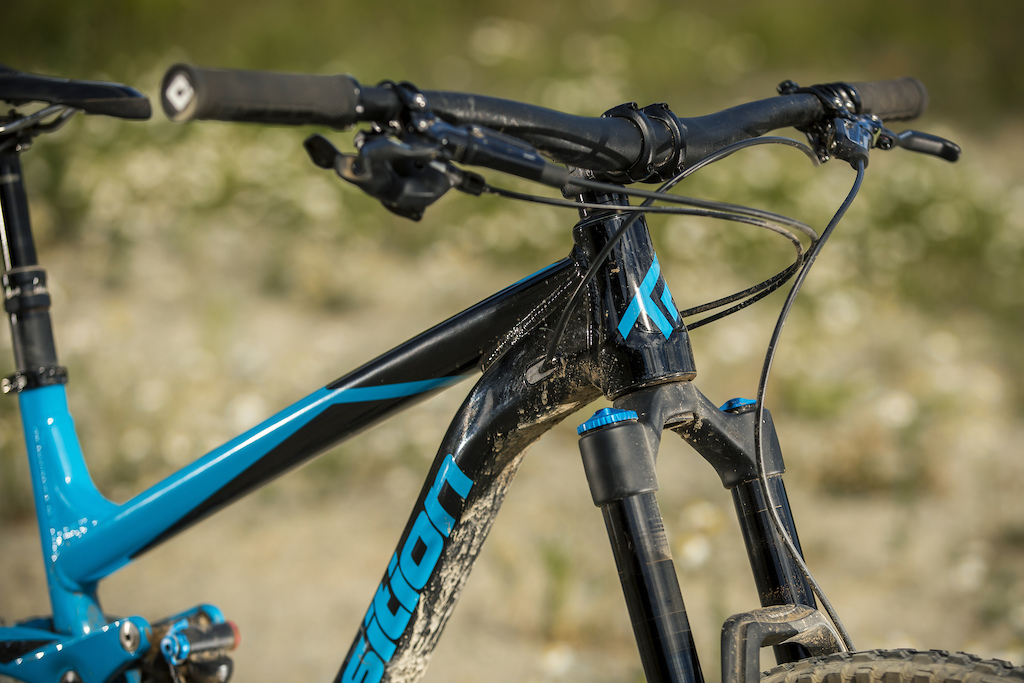
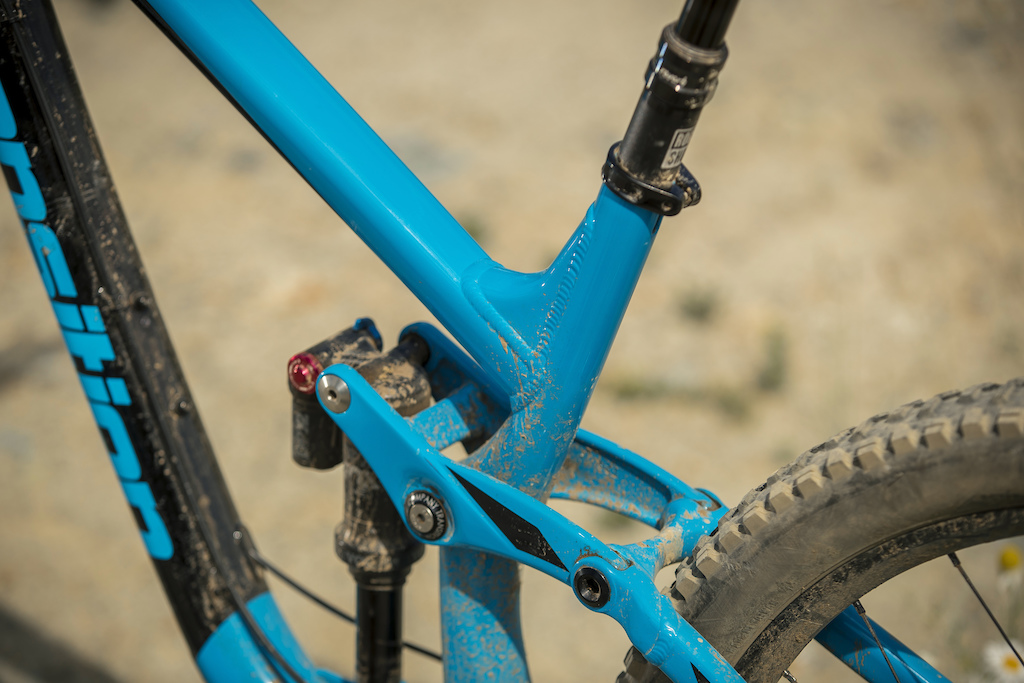


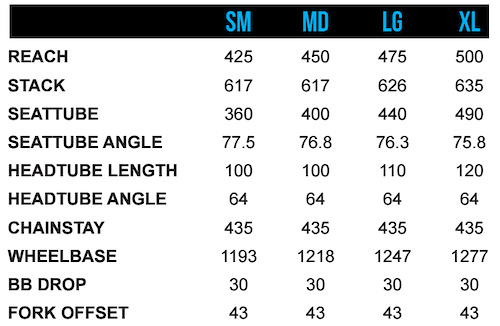
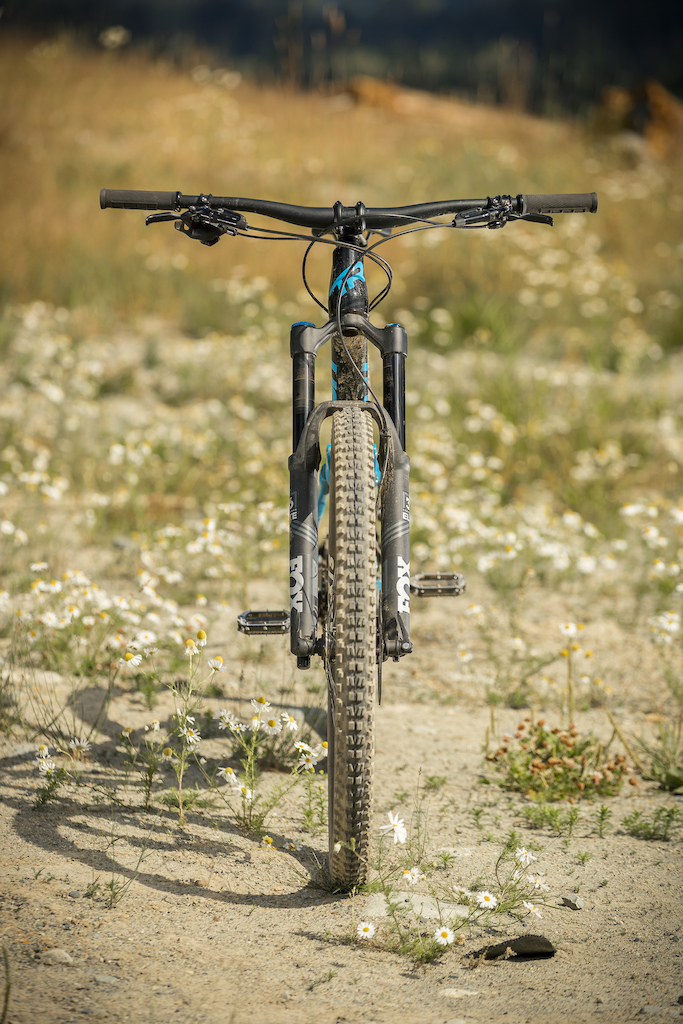
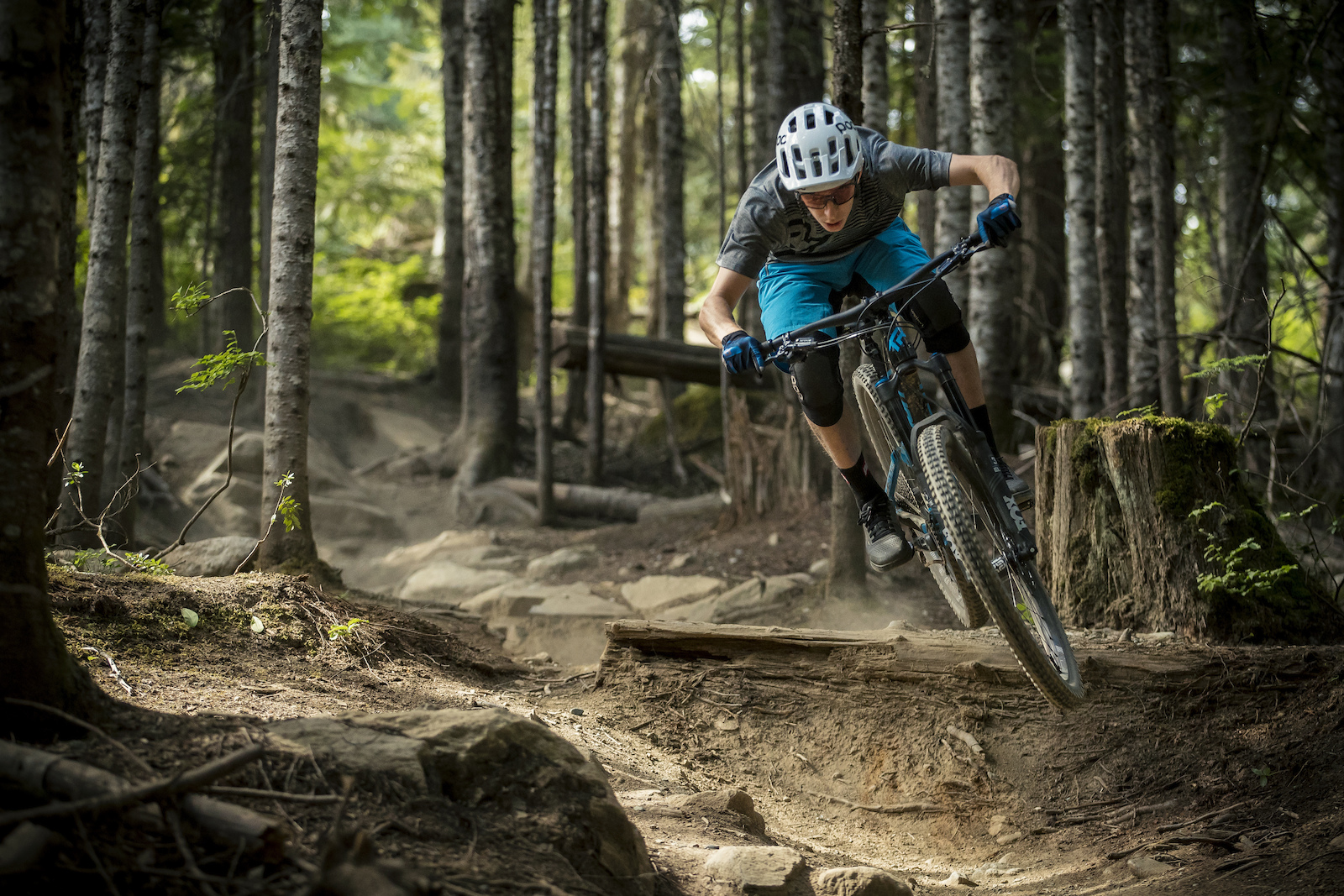



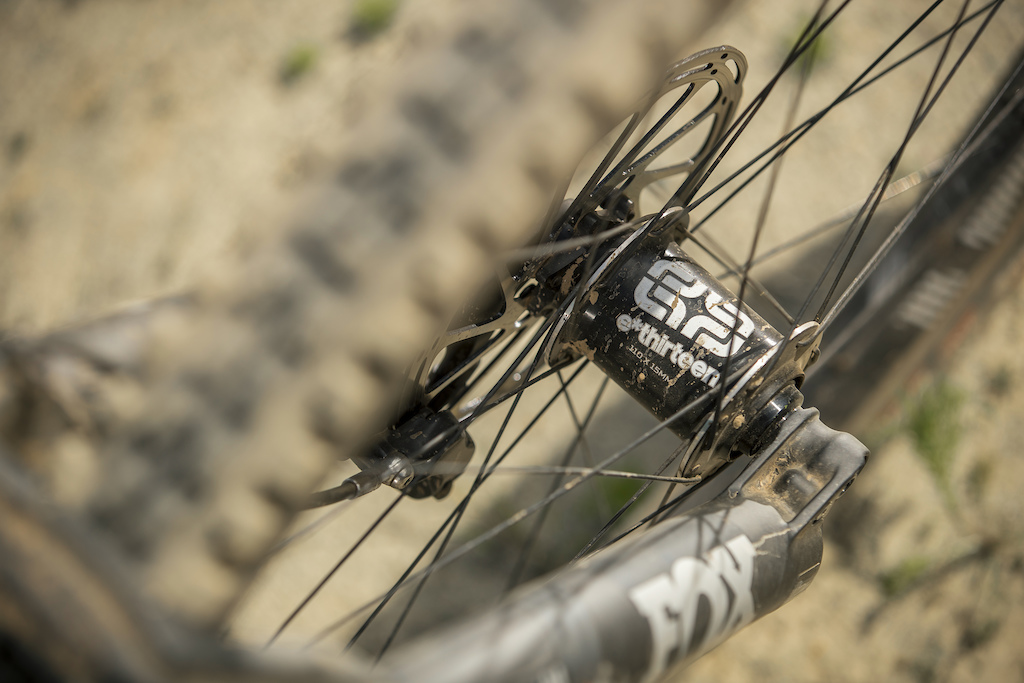
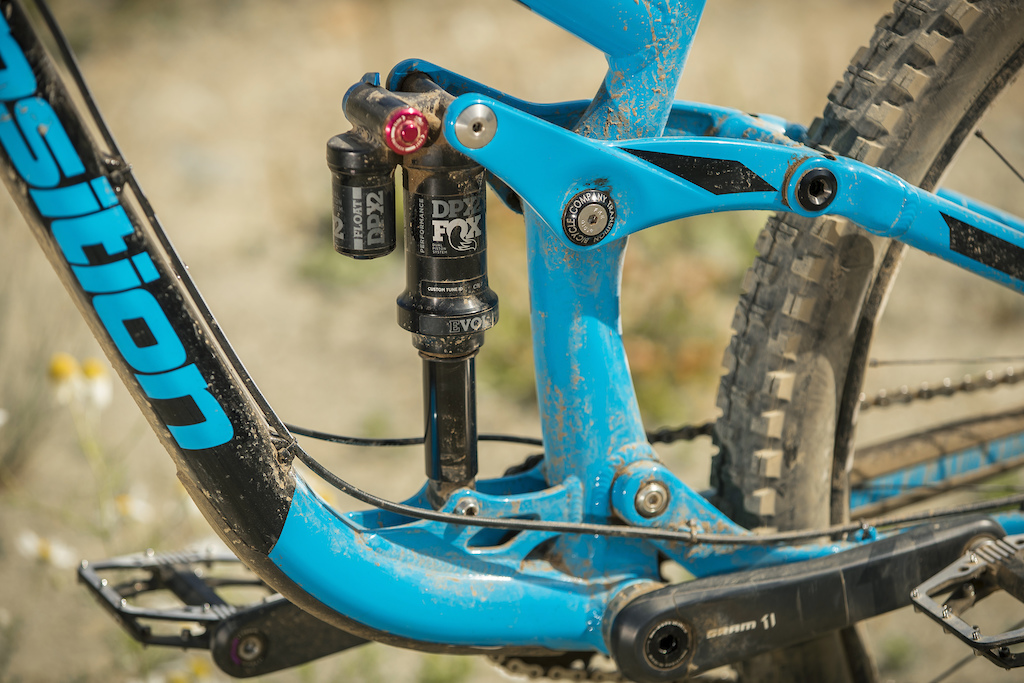

Just downhillers who use lifts or trucks, and enduro riders are enjoying massive, lasting erections and full sex life.
About riders on trailbikes, it's not clear for now but one thing's for sure: it's small.
Rolls right off the tongue.
It was kinda fun.
It made the slight uphills feel like a downhill
The downhills still felt.like a downhill on a 50lb freeride rig from early 2000s (maybe a Santa Cruz bullit with a monster.t)
And steep climbs were almost enjoyable.
No burning gas shuttling to the top
Everyone should at least try a new hobby sometimes
Now, the issue with E-bikes goes further than that. It has to do with safety regardless of legislation. E-bikes are an issue already in cities. Different challenges than in the mountains but still. There are already enough a*sholes on regular bikes bombing down the hill causing risk of collision with hikers. Scaring the sht out of ALL hikers. People hike with their kids. I personally have witnessed potentially dangerous situations when hiking. Now what E-bikes do, they introduce that risk also for climbing. Speed may be slower but they ride more silently that a bike rolling downhill and often hauling brakes. Also there is now a higher risk of collision between climbing biker and descending biker. At least on mixed trails.
Another risk is that E-bikes are getting equipped with strong motors which may be limited to 250W but there is a strong incentive to hack the computer an go full power, then why not mount throttle so you don't even need to pedal? Damn right people WILL do that.
In the perfect world e-MTBs should not be granted access to mixed trails at all. It should be clear. Fireroads be my guest: mountain paths - fk off. I see however no reason what so ever why e-bikes shouldn't be allowed on MTB dedicated trails. Here all the stupid haters are missing a huge opportunity in finding an ally in MTB specific trail advocacy.
Nice review and thanks for taking time to switch out forks/offsets -- that's the kind of thing we like to know and can't easily do ourselves.
This looks like a great daily driver for folks who live in steep/ rowdy trail zones. @ThomDawson:
An honest review would be great if you ask me.
That said, I'm dubious that a 27lb bike can do everything my 32lb Megatrail does.
I dunno why I'm getting agro about it though, if it were me I'd hardly try and market my bikes to riders that can't afford their rent because they ride too much. Appreciation from the small percentage of penniless peeps who can actually ride won't pay Lars' mortgage.
But, on a positive note, steeper seat angles for bigger sizes, winner!
A guy on a medium doesn't need a 76 degree seat angle, 74 is fine and puts the wider part of the saddle a thinly bit more out of the way behind the BB. A guy on an XL will with a 76 degree seat angle will still have far more relative mass behind the BB than a guy on a small with a 73 degree seat angle.
Then, as you say, there's rear centre length. 435mm is killer for a small with similar reach numbers but barely long enough for a 450mm reach medium. Anything bigger than those sizes and you're into huge weight distribution compromises territory.
Still, congrats on Transition for actually doing some real R&D and bringing attention to the dumb offset forks we're all having to ride on 29".
Having ridden this thing a bit, it does not need any longer CS. Maybe a touch shorter even.
Don't forget the front center on these is longer than most already for each given reach. Reach is only half the picture when we're talking about front-center.
Having said that I don't think Transition are the brand to look to if you're a Pole and Chris Porter fanatic. I don't think they've made these bikes to go the fastest for the least amount of rider input (like the aforementioned). I think Transition value attributes other than just how quick it is against the clock.
Their last current generation of bikes have been hailed for their ride characteristics despite so many other brands bringing out loooong designs, they'd have been foolish to stray too far from what was so clearly a winning formula.
I guess if you are super tall, this does run the risk of looping out doing wheelies in the parking lot. Sorry, can't help you there- just remember those chicks are laughing with you, not at you.
Thom, if we're normalizing head angles at 65 degrees (which we seem to be) the front centre and reach are effectively the same thing. But yeah let's call them front and rear centres.
Go put your hands on a sofa and get into a push-up position. That's about 50/50 weight distribution between your feet and hands. Then tell me how long you could ride with that much weight, or even half that, on you arms?
Weight goes through the BB. Fact. Weight is easy to get rearward on super steeps. I'm not advocating for 50/50 but you can't throw 30mm on the front centre and do nothing to the rear centre without loosing front grip.
Unless I really do need to adopt the push-up position? Sounds a bit risky on blown out, loose, 30kph turns eh?
Anyway I'm bored of this argument. It's common sense and the MotoGP guys worked it out decades ago.
"Weight goes through the BB". Yes, it does. The question relevant to the debate is "at what angle?" Unless it's perfectly 90 degrees 100% of the time, then your weight will have some component going to your hands. Basic physics matey.
"You can't throw 30 mm on the front center and do nothing to the rear center without loosing front grip." Did you mean rear grip? Because, basic physics again here, pulling the CG forward would increase, rather than decrease traction on the front wheel.
"It's common sense." I guess we disagree on common sense, but whatever. PS: MotoGP is MotoGP. I fail to see how riding super bikes on flat closed courses at 300+ kph has much to do with riding a bicycle down steeps and into bermed turns at 30 kph. Almost like they are two completely and radically different things!
If someone is standing/sitting on a bike stationary, and you had to pick up one end /wheel of the bike off the ground which end would you pick up? Of course you would lift from the front wheel. That's the basic physics of leverage.
And if we added 500mm to the front centre would that change your decision? Clearly it would make it easier to pick the front of the bike up.
I've ridden both long and short chainstay bikes. On the long stay bikes you don't need to consider forward/rear body position when cornering. On the short stay bikes it's a constant battle to keep the weight distribution right and not have either the front or rear lose grip.
I'll admit we all ride bikes differently and not everyone will notice this but a large number of us are annoyed at the death of the long chainstay.
Trust me, unless you're riding a DJ bike on pumptrack, you're not putting anything close to the force required through the bars to influence front wheel grip.
MotoGP is100% about even grip balance. Those guys spend hours at every race trying to balance F/R grip. Mountain bikes are no different in the sense that one wheel will break free and loose grip before the other based on the loads applied. Obviously angle of terrain has an influence on but as I said above it's vastly easy to unweight the front of the bike than load it. In addition if a bike has more balanced spring rates from neutral weight distribution it will compress further at the rear on steeper descents. Not to mention the more balanced tire pressures. A neutral bike is stable, stable is fast.
Look at Minnaar. Faster than he's ever been at 36 years old with a 460mm rear centre.
This is one of the most silly things I have ever read. Think more.
"Trust me, unless you're riding a DJ bike on pumptrack, you're not putting anything close to the force required through the bars to influence front wheel grip." I don't trust you, because this is a demonstrably ridiculous statement. Proof: Ever seen someone do a nose manual? How much force do you think is on their bars?
Even better proof: the Enduro nose-manual corner. Hmmm... that's 100% of the weight on the front wheel carving a turn. That seems like quite a lot of influence. Best proof: Sam Hill pulling out a two wheel skid in insert favorite loose off-camber turn here> by... putting all his weight on his bars, getting his front wheel to bite, and letting the rear do whatever it wants because it doesn't matter for correcting a turn.
"MotoGP is100% about even grip balance. Those guys spend hours at every race trying to balance F/R grip." And again, MotoGP is a radically different thing than mtb. For starters, the bike weighs a lot more than the rider. Also, they don't have steeps, rock gardens, and berms. They do have 250+ hp engines, and average speeds at least 10 times greater than mtb. Maybe that has something to do with what they choose to focus on?
"Mountain bikes are no different in the sense that one wheel will break free and loose grip before the other based on the loads applied." Yes, and in mtb you'd much, much rather have the rear break loose rather than the front. Which is why having more traction on the front is a good thing.
"Balanced spring rates" Spring rates have absolutely nothing to do with a frame's geometry. The spring rate is entirely a function of spring stiffness/air pressure, period. Also, balancing them front to rear is meaningless, because your front is always a 1:1 leverage ratio (barring linkage forks), and the rear is some constantly varying ratio always greater than 1:1.
"Balanced tire pressures." Er, what? Still nothing to do with frame geometry. Nor do you want them balanced.
"Minaar... 460mm rear centre" Which is what he was running in 2016. So it didn't actually get longer this season. See www.pinkbike.com/news/behind-the-bike-developing-the-xxl-santa-cruz-v10-2016.html
You know what did change for Minaar this season? His front center... it's longer. Hmmmmm.....
You see, if you get the rider less rear biased everything else falls into place.
Yes I agree that I want the rear tire to break free before the front. 100%. The easiest way to ensure that is to have a bike that isn't massively rear biased.
Your Sam Hill point is absolute gold. Even the best DH rider I have ever seen, with confidence at an all time high, washed out his front tire on a loose flat turn while trying to load the front end. Now, do you think you can realistically ride in a similar manor to correct the deficiencies of a bikes weight distribution? I can't, not even close. But I have way more of a chance if I can put weight on the front end WHILE being in my natural riding position.
I've owned a shid load of bikes and the more rear biased they have been the more vague the front contact patch has been.
Riders mass is split between feet and hands. The further forward your hands, the further forward your CG.
Why on earth do you think making the front end quite a bit longer, and the seat tube quite a bit steeper forces a rear weight bias? It will put the riders weigh further forward compared to a bike that has a shorter front end. You sit further forward with relation to the axles and BB, and you reach out and lean forward in a posture closer to the attack position. Everything about your riding is further forward. If anything, it is harder to get back over the rear wheel, but you discover you don't have to.
Longer chainstays are a band-aid for crummy design. Yes, you get more stability, but at the cost of even worse low speed handling and a short front end that is prone to bucking the rider. Keep the CS short and push out the front, and it's golden. You have greater leverage to load the front and keep from being knocked off line, and you keep the wheel base and handling reasonable.
Why on earth do you want so much more weight on your upper body and arms? Do 30 explosive push up's and then 30 jump squats. I'll take the weight and g-forces with my legs all day, everyday. Your arms are there just to make adjustments when needed and absorbing impacts coming through the front of the bike. And I believe the longer front ends of today make that much more comfortable. Nice, neutral attack position, while still at the ready to weight your hands. Go way longer and you rely on an inferior muscle group to do a job it shouldn't be doing, the extreme being the superman position mentioned above.
You want more front end grip? absolutely longer rear centre's are a much more efficient way of getting you that grip, but as you mentioned, you lose some "flickability". Horses for courses. Pros and cons.
That being said, geometry-wise Sentinel is a nice improvement for tall riders. Especially those who find it hard to justify purchasing Geometron / ION-G (and that new ION-G15 does look superb).
I'm with you and I think getting the right chainstay length for your height/ preference should be prioritised over things like 'longer, lower, slacker, reduced offset', etc.
But I don't think it's a good enough gimmick for the manufacturers to sell to warrant the associated costs. It would likely take a redesign from the ground up with the varying chainstay lengths in mind from square one to ensure characteristics remain similar across the size range.
It's easy to add an inch to the whole range, reduce the offset to that of the next lower wheel size, drill some holes and call it internal routing...cut the seat tube down (and hey look that means we can claim a steeper seat angle too, bonus!)...maybe not quite as easy to do the chainstay thing..?
Basically- CS length should be as short as reasonably possible while retaining optimal seat post angle, tire clearance, and suspension kinematics. For a modern 29er, this is around 425-435 mm. Now, instead of increasing the rear end a bit with each size to get more stability, the front end should just grow even more to keep the relative CG-rear axle distance the same.
I can see whee you're coming from, I thought along the same path at one point as I'm sure have many others but the point remains. Lengthening the front end is the same as shortening the rear end aka rear wheel bias, which means less weight on the front end.
That's not to say rear wheel bias is wrong, but if you're arguing a point for a balanced ride and grip...well the word bias kind of gives it away.
Still, that really only moves your head, arms, and a small percentage of your torso (maybe, roughly 15-20% of your total weight) roughly the same distance that your reach extended. Provided that you take all of that additional forward weight onto your hands. If you simply use your glutes more to support the deeper hip hinge, you've barely changed the distribution of weight at all.
Quite simply, the way I see bike design is as follows (feel free to agree or disagree, it's just my opinion):
1. A bike needs to be comfortable for the person riding it.
This means that they need to be able to push the bars away, and pull them towards their chest from their natural position with sufficiency. They need to move their butt towards and away from the natural position with sufficiency. If a bike is too long (in reach), you can't get weight far enough back at full extension. If a bike is too short, moving forward comes with great risks of OTB.
This also means that it depends on the person. There are an incredible number of people who can't simply hinge at the hips deeper to get the advantages of a longer reach. Whether it is a flexibility issue, or a strength issue, longer bikes will just cause some people to reach with their arms and severely inhibit the their ability to control the bike. And even if you do have the strength and flexibility, you will get to the point where you are too extended both in hip hinge and arms, that you bring your butt forward of the BB to get comfortable (a la the the ridiculous superman position that was brought up, I understand that we're far from going there, but it's definitely not an ideal position to get closer too for many, many reasons)
2. The bike is well balanced underneath me, in my comfortable position. (When I need to change the balance for the terrain, I am easily able to do that having the ability to move forward/rearward from my comfortable position.) This is why Transition started playing with fork offsets, and also why rear centres are still about much more than making them as short as possible. There is no denying that longer rear centres/shorter front centres (i.e bb to axle centres, and not reach) will move the distribution bias forward for the same body position, and shorter rear/longer front will move bias rearward.
This essentially means that if my bar reach and stack remain constant, and I slacken my head angle (Front centre increase) I either want to get reduced offset to reduce front centre to where it was (a la the bike being reviewed), or i get a longer rear centre.
3. Make the bike work (primarily suspension). I'm not an engineer, nor claim to be even an armchair engineer - so I'll leave that for the suspension experts.
Honestly, I think everything is damn close as far as comfort is concerned. I think everybody feels way better on their bike now, than even a few years ago when the standard position was hanging off the back to not go OTB. We absolutely agree on this (I think?). As far as making reach drastically farther than the current 440-455 size medium, I don't want to see it and I sure hope that they make small sizes readily available if that happens.
also, everything above is in reference to descending. Climbing control and comfort is always going to be the compromise on these bikes, but slightly steeper seat tube angles have made it much better. That's where my take on climbing ends.
Lengthening just the rear end will result in a more centered rider, simply because the rider's CG is now further from the rear axle. The CG to the front axle has not changed. Accordingly, while you get the benefit of greater stability due to the greater rear-axle to CG value, you do not get the benefit of a greater front axle-rider CG, which leaves you more susceptible to big front hits bucking the rider.
Lengthening the front end instead will shift the rider's CG forward, although not as much as the front axle shifts forward. Since the rear axle to CG is increasing, you get those stability benefits, but you also get greater control over the front thanks to a longer front-axle rider CG. The cost of this is the wheelbase does grow by a greater amount than if you just wanted to increase the rear center, but the tradeoffs are worth it.
Eh, I think we will just have to disagree on some stuff. See the above reply for rear center vs front center effects. I do agree that current bikes are definitely an improvement with not having to hang over the back wheel. However, I don't think sizing has gone far enough.
Basically, to me the Mondraker Dune is what sizing should actually be (note: I do not own any of their bikes, I just think they nailed it on the geo, along with a few other companies).
Reach is 452 for small, 472 for medium, 493 large, and 508 XL. It seems insane on paper until you ride one, and then it just makes sense.
How many bikes are designed in way to optimize these two parameters in order to achieve more or less the same envelope of incline angles for an envelope of sitting heights at a given frame size? At best an effort is made to adjust real STA's to achieve equal effective STA's across the sizing chart or as in Transition's case report true values. An effective STA is also a dubious parameter since it is given at a stack height and differs from STA at the real, rider specific, sitting height.
Even so, I'll still debate further, haha. While you're definitely correct that lengthening the rear end does not shift the CG relative to the BB or front axle, it does, however, change the weight distribution between the front and rear axles or contact patches. Taking weight off the rear and placing it onto the front. What everybody seems to be asking for in some way.
And your point about points of contact does not seem logical. Just because your stem is connected to your fork, which draws a straight line to the axle, which is directly above the contact patch of the tires means nothing at all. Pushing perfectly downward (i.e. perpendicular to the ground - the grip component) on the front tire is damn near impossible without getting weight so far over the front of the bike and in an unridable position (I mean for actual riding, not nose manuals). Unlike the rear end, which is comparatively easy to push into the ground perpendicularly. Which is exactly why we're in this debate in the first place, front end grip is much harder to come by, especially while trying to keep bikes snappy, and not OTB happy. And as with any debate, there's obviously two sides arguing for what they think is the appropriate way of solving it.
Re: Mondraker Dune. Yeah I'll agree with you on that their geo actually looks on point. Although they (along with a few other companies, including the transition above) purposefully design around a 30-35mm stem while others still design the handlebar reach using a 50mm stem. So it actually makes them seem longer on paper, while handlebar reach is quite close to others when used with the appropriate stems.
Also with the Mondraker, they have grown chain stay lengths over the last few years in the long settings (the Dune never actually had adjustable chain stays, but obviously something triggered them to make it an option), while keeping the short around the same.
Do they all 'prefer to plow straight ahead rather than pop off trailside features'. I'm looking for something that will be fun at non-warp speeds too.
@mikekazimer : in the vital test yeti specced the SB 5.5 with 44 mm offset too, not sure why...
The feeling of wheel flop may also be exaggerated by the weight on the front axle. This is something I haven't had chance to play with but I wonder if perhaps due to Transitions short chainstays and (therefore less weight on the front axle) that the wheel flop is less of an issue than I experienced on a bike with long chainstays and more weight on the front axle.
In any case the effect of increased trail on wheel flop will be less on the smaller wheeled and steeper bikes, the Sentinel will have the most wheel flop of the range.
en.wikipedia.org/wiki/Bicycle_and_motorcycle_geometry#Wheel_flop
@nicolai12 I agree that full suspension bike geometry is dynamic and the static numbers don't tell the whole story, but with 2 deg slacker head angles plus reduced fork offsets, I still think it's safe to say that these SBG bikes have more wheel flop even at sag.
Perhaps there are other factors that affect how much you can actually feel the increased wheel flop, though, similar to how seat tube angle and reach can affect how long the chainstays feel in some situations despite not actually changing the chainstay length.
What's your experience on the 17' Trek Slash? How do you feel about the de-stroked FX2 shock, good idea? Oh, what about when the knock block chip which doesn't crack resulting in knock block components deforming leaving a creaky steering setup. It looks pretty, but that doesn't mean much when the drop-outs are 157mm and the rear triangle is out of whack from day 1 haha. The big question here is not about Treks layup abilities, it's why are manufacturers still struggling with the mathematics and vehicle dynamics?
Everyone has a new carbon frame and they think that just producing it is fine, the reality is no one is really thinking about the things the matter...well maybe a few. Transition slightly outside the crease, but it's just because they ride and they have good people at describing subjective things. I look forward to more sophisticated and improved dynamics from manufacturers...a few people are getting there.
one thing though, id love to see a re-review of the original sworks enduro 29. this transition is said to climb well but are the standards for good climbing getting lower? compared to new bikes the old enduro is short, steep and has a high bb, but i still in a heartbeat recommend it to all my friends looking for new 2nd hand bikes.
Because if it is an all arounder then the head angle seems to be too slack but if it is a mini DH bike then the rear travel seems to be not enough.
Personally I would have preferred it to be 160/160 because I also have a 160/140 bike and I always feel like something is missing (20mm of travel most probably
Anyway I guess that the new Patrol may be a better for for me.
It reminds me of smartphone batteries that become smaller and smaller but the excuse is that the battery management is better.
If this is true (both for the Sentinel & the smartphones) then I wouldn't want any compromise because it may ride like a 160 but when I jump or hit a drop hard most probably I will miss the extra 20mm. At least this is how I feel about my 160/140 current bike.
They know their niche/customers
They market said bikes as "maximum fun" - very good marketing admittedly and their bikes are getting better and better, I really like the look of this. The whole "bikes for fun" thing always strikes me as such a basic marketing ploy and I'm always amazed how well it works with people. Riding/racing/jumping/dicking about on bikes is always fun, it doesn't matter what chainstay length the bike has!
Now this summer I rode with my buddy, we are both on similar level. Him on 2014 E29 Comp, me on Antidote carbon jack. 160 travel with better suspension. I was staying on his tail for the most part. After we swapped bikes I just took off. Moral of the story: E29 suits me better. I'd love Antidote to make a long travel 29er
and given your love for the Antidote, that is quite a statement!!
Works don't do anglesets in the right size and I've heard too many bad reviews of Cane Creek's to bother, but a 170mm fork would slacken it a bit, could even go for an external bottom cup too. Slightly higher BB wouldn't bother me.
www.transitionbikes.com/images/Sentinel_Geo.jpg
Now Transition is saying 46 offset is good and will make it conrner like it's on rails. Great but won't this make the 29er slower and floppier in the tight stuff again? I guess this is why they say in the article it will work fine with 51 offest as well. Keep the front more agile.
Too bad Transition always makes the heavier aluminum bikes first and waits a year or two to offer the carbon version. By that time I've move on to another lighter carbon bike available now. They should really offer the carbon and aluminum versions at the same time.
140 out back on a 29er is good for an all-rounder. Pedals and descends well. But 160 up front with a 64 degree HTA ? Pretty heavy duty and seems would be overkill on anything but very rough descents. That reduced offset fork would need to have a pretty big impact to real this beast back in.
I was hoping this bike would be a good all-round, like most mid-long travel 29ers aim to be, but on paper looks like too much bike. I thought the Smuggler would get something like 130 out back and 150 up front with angles just a bit more conservative. That 130/150 split climbs and descends very well.
Sorry to generalize, but my impression is that many Pinkbikers are of the "I live for the DH" type. If so, why are you always looking for a bike to make that DH come to an end as quickly as possible? Maybe you'd want to savor the flavor?
Bellingham climbing is wimpy compared to sea to sky.
Very fun trails though.
Sure bud.
That's very bro of you to assume that I don't know your locals only trails but I do.
The climbs are easy.
Bikemag" Though it can’t quite float through the kind of madness today’s enduro-inspired 29ers can, it certainly will keep you safe if you try"
Pinkbike "I will say that the Sentinel feels more like a pure DH machine than either the Enduro or the Slash"
So is it an enduro/dh bike or a trail bike that you can push from time to time?
Makes me chuckle when my Bird Aeris one45 in large has a reach of 506mm and Geometrons are even longer. The additional reach and corresponding growth in wheelbase makes the bike unbelievably stable on proper rough downhill trails and through corners as my weight is always between the wheels, and yet the steep seattube angle makes climbing a dream as the front end never feels light no matter how steep the trail is.
Right?
Seems like a crappy time to buy a new bike right now. Everything is going to be longer, slacker and less offset next year. And it also seems like 27.5 is about to go the way of 26 now that they have this new offset standard. If DH bikes are 29, why should anything be 27.5.
Seems like I definetly should not drop money on an HD4 then right?
Hahaha
Haha
wow thank god there's some really experienced guys like you out there to sift through it all for us.
Stability at speed will give less skilled riders confidence and make them feel faster.
one of the biggest difference between the truly great riders and schlubs like me is cornering. Anyone can point it down hill and let go of the brakes. Skilled riders will be able to "turn" better letting them truly ride these bikes to their potential.
What's driving things now is after fighting every standard, everyone wants to be the first to jump on the bandwagon to show how smart they are. I think there are some real merits to the new geo but the people pushing it, especially in Europe and the Euro media are absolutely insufferable.
Have you ever thought of your own website?
Aluminum - Check
Threaded BB - Check
BLACK Fork/Shock - Check
This beaty would not look half as good with this f*ugly Kashima colour.
Wondering since you've ridden both; thinking my next set of wheels will be a 29" for trail and enduro proposes. I'm leaning towards the Sentinel but am considering the Patrol and the Jeffsy 29 as well.
I'm 6' 200~ lbs and 32" inseam. Ride AZ babyheads mostly with an occasional CO or CA ride.
All my friends are riding endure and XC now (switching from DH) and riding alone isn't as fun. Lol
Fitness levels are pretty good and I still love to comb Hills and kick some pretty good jumps.
I'm bummed because demos are once a year here in Sedona. No telling who'll be there until week before.
Looking to buy this Oct.
Any info is appreciated. Thx
I did recently realise that the actual vertical travel on a 160mm fork is about 145mm (fork travel x sine head angle) so maybe everything should have a longer fork?
Also some people, get nuts, like I did 3 years ago. Sell 160 bike, buy 120 trail bike, then toss 160 fork and Minions on it. Fkng ridiculous. Oh yea it descends faster than 120 bike with 120-140 fork, just not as fast as 140 bike with 140-160 fork. Given you use same tyres, as you would on bigger bike, your "pedalling advantage" goes out of the window.
Aouch that's quite heavy. Targeting an XL that will bring it largely over 15kg with pedals.
Worst is to think they'll probably bring in a carbon version next year
A bit intimidated by the weight. One question: we're the tires on the test bike tubeless or did it have tubes?
That being said, I've been riding on a 32lb Kona for years. You just get stronger.
I mean can you lean inside the corner instead of the opposite ?
Should be "understeer" if the front wheel is washing out.
Oversteer is too much steering input. When you do this, one of two things will happen:
You turn tighter than you intended, causing you to have to correct. This is a manageable and desirable scenario as the driver can control the direction of the bike (or whatever) with subtle steering corrections.
OR
You input too much steering to the front, overcoming the traction. This is a washout on a two wheeled vehicle, usually resulting in a low side crash. In a car, it would be overshooting a corner.
How does this compare to others in its class? (Enduro, Slash, 5.5, Wreckoning, etc)
How does the Sentinel compare to the Rallon? Similar geo but Rallon seems like better all rounder.
29er jeffsy?
No bud.
vais mandar vir uma?
Tenho é de a meter leve. Sub 14kg era perfeita.
Agora a cena do offset é que me esta a dar cabo da cabeça
isso sim, se te disser o peso com que a minha está até te assustas
de se é algo bom ou mau?
nesta sentinel esses 14,5 pelo menos para mim ia aumentar, que não consigo andar com os pneus exo
His review is awesome and what in a perfect world would be the bare miminum requirement for a non shill/frill review. Very fair and honest and obviously some homework was done beforehand. The explanation of the difference in feel was excellent and also the fair explanation of its pedaling, weight and climbing characteristics. Also the fair comparison between the other bikes.
Now n days if you look carefully and read between the lines you can see that the reason most reviews are full of fluff is because the person riding them doesn't really know how to truly really ride right and therefore don't really have subjective opinions and its typiccally just fluff and shills.
I'm always skeptical these days of the bike review reviewers because of the amount of "wanna bes" and guys who can't really read amd give pretend informed opinions.
Now n days if you look carefully and read between the lines you can see that the reason most review reviewers are full of fluff is because the person reading them doesn't really know how to truly really read right.
#26aintdead